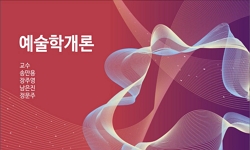본 논문은 주체와 타자의 경계에 위치한 아브젝트(abject)에 대한 사유를 식물존재라는 은유적 표현을 통해 작업한 연구과정을 담은 논고이다. 아브젝트는 주체에서 추방되어 타자와의 경계...
http://chineseinput.net/에서 pinyin(병음)방식으로 중국어를 변환할 수 있습니다.
변환된 중국어를 복사하여 사용하시면 됩니다.
- 中文 을 입력하시려면 zhongwen을 입력하시고 space를누르시면됩니다.
- 北京 을 입력하시려면 beijing을 입력하시고 space를 누르시면 됩니다.
부가정보
국문 초록 (Abstract)
본 논문은 주체와 타자의 경계에 위치한 아브젝트(abject)에 대한 사유를 식물존재라는 은유적 표현을 통해 작업한 연구과정을 담은 논고이다. 아브젝트는 주체에서 추방되어 타자와의 경계에 잔류하며 주체를 위협한다. 또한 해소되지 않는 불안을 내포하고 있으며 주체와의 경계선을 명확히 그어두는 것이 불가능하다. 아브젝트가 주체를 매혹하고 끌어당기기에 주체는 혼란스럽고 두려운 감정까지 느끼게 된다. 주체가 아브젝트를 밀어내는 것은 자신으로부터 이질적인 것을 타자화하는 경험이다. 연구자는 우리가 살아가는 공동체를 견고하게 하기 위한 규범 또한 이질적인 것들을 배제하고 동질적인 것들로만 사회를 구성하고 싶은 지배체계의 욕망에서 비롯한다고 보았다. 개념에 관한 연구에서 더 나아가, 아브젝트를 표현한 예술을 살펴보았다. 아브젝트 미술(abject art)은 신체의 규범을 위반하는 것과 혐오감이 드는 대상을 소재로 한다. 신체는 주체의 경계가 드러나는 곳이기에 신체에서 벌어지는 아브젝트의 작용을 표현한 예술작품을 통해 주체의 경계에 있는 아브젝트를 감각할 수 있다. 아브젝트 미술은 우리의 전통적이고도 절대적인 미적 기반에 충격을 주어 관람자로 하여금 고정관념의 틀에서 탈피할 수 있게 하기도 하며, 종교의 희생제의와 유사하게 관람자가 작품의 상황에 몰입할 때 감정적인 동요를 불러일으키거나 숭고미를 느끼게 하기도 한다. 아브젝트와 주체에 대한 연구를 심화하는 과정에서 연구자는 혐오와 차별 없이 소통하기 위한 시도로 식물존재를 제안하였다. 이는 관념적으로 고정되지 않은 위치에서 타자에 대해 사유하기 위한 것이다. 식물존재로 대표하여 소개하는 연구자의 작업은 아브젝트와 주체에 대한 사유과정을 통해 우리 세계의 아브젝트를 감각하고, 타자를 차별이 아닌 차이로 수용하는 것을 실천하기 위한 것이다. 식물존재는 도자의 재료와 기법으로 제작하였다. 식물존재의 언어에 대해 상상하는 것이 도자의 재료인 점토에서 느껴지는 비언어적인 감각을 감지하는 것과 유사하다고 보았기 때문이다. 연구를 통해 연구자는 정체성의 범주와 공동체의 규범에는 절대성이 존재할 수 없으며 차이에만 매진하지 않고도 주체가 타자와 관계 맺을 수 있다는 것을 인지하였다. 모든 개인이 자신만의 고유성을 가진 존재의 의미를 찾기를 희망한다. 우리를 존재하게 하는 경계를 부정하지 않으면서도 차별과 혐오의 구조를 인식하며, 각각의 다름을 차이로 수용할 수 있는 삶의 가능성을 제시함에 본고의 의의가 있다.
다국어 초록 (Multilingual Abstract)
This study covers an research process of contemplating the abject at the boundary between the subject and the other using the metaphorical expression, The Vegetal Being. The abject is expelled from the subject, remains at the borderline with the other...
This study covers an research process of contemplating the abject at the boundary between the subject and the other using the metaphorical expression, The Vegetal Being. The abject is expelled from the subject, remains at the borderline with the other, and threatens the subject. The abject embeds unresolved anxiety, and it is impossible to draw a clear line with the abject and the subject. Since abject fascinates the subject, the subject feels confusion and even fear. The subject pushing out the abject is otherizing what is different from itself. The researcher regards that the regulations that solidify the community in which we live also arise from the desire of the system to organize the society only with a homogeneous identity. Further from reviewing concept of the abject, the research moved to abject art that expresses abjection. The abject art features violations on the borderline of body and various objects that evoke a sense of disgust. Since the body is the place where the boundary of subject is revealed, through artworks that expressing abjection we can sense what exists on the body. The abject art shocks so called traditional and absolute aesthetics and helps us to break free from their frame of stereotypes. Instead of religious sacrificial rite, the abject arts can provoke emotional agitation or state in a sublime when the audience immerse themselves in a situation that art presents. Exploring the abject and subject, the researcher proposed the Vegetal Being as an attempt to communicate without hatred and discrimination. This is the way to think about the other from a position that is not ideally fixed. The artwork of researcher represented by the Vegetal Being suggests to sense the abject in our world through the process of contemplating the abject and subject and also to practice accepting others as differences rather than discriminations. The Vegetal Being is made with clay materials and ceramic techniques. This is because imagining the language of the Vegetal Being was similar to detecting the nonverbal sensations felt in clay which is the material of ceramics. Throughout the exploration, the researcher recognized that absoluteness cannot exist in the categories of identities and the regulations of a community, and that the subject can establish a relationship with the other without being buried in differences. The researcher hopes that all individuals will find the meaning of existence with their own uniqueness. The significance of this study is to recognize the structure of discrimination and hatred without denying the borders that make individuals exist, and to present possibility of a life that can accept each difference as a difference.
목차 (Table of Contents)
- Ⅰ. 머리말
- Ⅱ. 아브젝트 감각하기
- Ⅲ. 식물로 생각하기
- Ⅳ. 맺음말
- 참고문헌
- Ⅰ. 머리말
- Ⅱ. 아브젝트 감각하기
- Ⅲ. 식물로 생각하기
- Ⅳ. 맺음말
- 참고문헌
- 국문초록
- Abstract
동일학술지(권/호) 다른 논문
-
- 이화여자대학교 도예연구소
- 고승연
- 2022
-
- 이화여자대학교 도예연구소
- 고형지
- 2022
-
- 이화여자대학교 도예연구소
- 김현지
- 2022
-
- 이화여자대학교 도예연구소
- 이지영
- 2022




 RISS
RISS KISS
KISS







